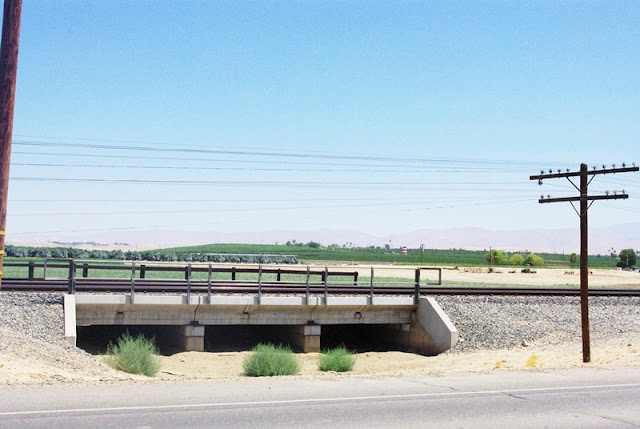Here's just one example of what I'm seeing that I'm aiming at more in my basement:
Just yesterday, the day before Thanksgiving, I was hitting my favorite spots, and it was just one train after another, sometimes two or three at once, whether it was UP or BNSF. Right after lunch I caught this meet of a BNSF intermodal with a manifest just south of the old Cajon station.
The intermodal is stopped, so the crew is down off the loco and doing a defect inspection. The cottonwoods along Cajon Creek are at their fall peak. But I'm seeing things that few modelers seem to pay much attention to.
- Of eight visible units, all superficially alike, there are three models, 9-44CW, ES44DC, and ES44ACC4. There are two different paint schemes.
- However, a more subtle difference is the antenna domes on the cab roofs. Positive Train Control (PTC) is being implemented, which requires new electronics and antennas on road locomotives. In other words, there are detail differences, new ones.
On BNSF, it's less clear -- they seem to be hidden under domes:
Note that these are in addition to the single white antenna dome that's been on locos for the past 15 years or so. Here's the older type:
This by itself is pretty standard on recent HO models, but the additional PTC hoods aren't. But on BNSF, there seem to be variations on the extra white PTC hoods, and beyond that, BNSF seems to have gone to a different design on recent locos. Here's a pretty new ES44C4:
This design is carried over onto the new Tier 4 locos:
I haven't gotten a good down-on shot of these yet. However, a Shapeways seller has put out a part for this.
The model press (such as is left of it), the blogs, the forums, haven't touched this stuff. I put up a query on the Model Railroader forum; so far, nobody's answered. In one of John Armstrong's books, he was taking about designing a club layout and imagined a child looking at the finished layout and asking, "Daddy, why don't those men look like they're having fun?"
Armstrong was a perceptive guy.





























